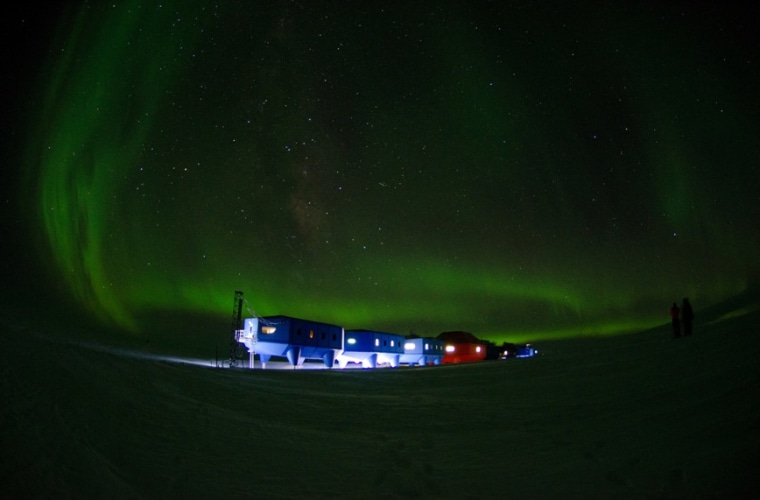A new British research station in Antarctica is officially up and running, the British Antarctic Survey announced Monday.
Known as the Halley VI Research Station, it is the sixth such base built by the United Kingdom and will provide a home to scientists doing research on the coldest continent, according to a BAS statement.
The station is made up of seven interlocking units, which can be hydraulically elevated to avoid being crushed by heavy snow, a fate met by previous structures. These units can be used as research labs, bedrooms and offices, and house up to 52 people during the busy summer research season.
Located on the Brunt Ice Shelf, floating on the eastern edge of the Weddell Sea, the station can also be moved inland on huge ski-like devices. This feature is important since the ice sheet is gradually moving out to sea, where large chunks of it fracture off and become icebergs.
The station is designed to withstand temperatures as low as minus 69 degrees Fahrenheit (minus 56 degrees Celsius). About 16 scientists will stay there during the winter, the release said.
The station was completed over the last four Antarctic summers — the harsh conditions of the continent only allow for building during nine weeks of the season. Construction teams worked around- the-clock in below-freezing temperatures to finish the station, according to the statement.
Research at previous incarnations of the Halley station has revealed changes in Antarctica's climate that are worrisome for the rest of the globe, said Alan Rodger, interim director of the British Antarctic Survey, in the statement.
This research taught the world about "our changing climate, about the possibility that melting ice in the polar regions will increase sea-level rise, and that human activity can have an impact on the natural environment," he said.
"The polar regions are the Earth's early warning system —it is here that the first signs of global change are observed."
In 1985, research at a previous Halley station led to the discovery of the ozone hole over Antarctica, the statement noted.
The London-based firm Hugh Broughton Architects and multidisciplinary engineers AECOM won an international competition to design the new research station.
The former station was destroyed, according to the release.
Reach Douglas Main at dmain@techmedianetwork.com. Follow him on Twitter @Douglas_Main. Follow OurAmazingPlanet on Twitter @OAPlanet. We're also on Facebook and Google+.
